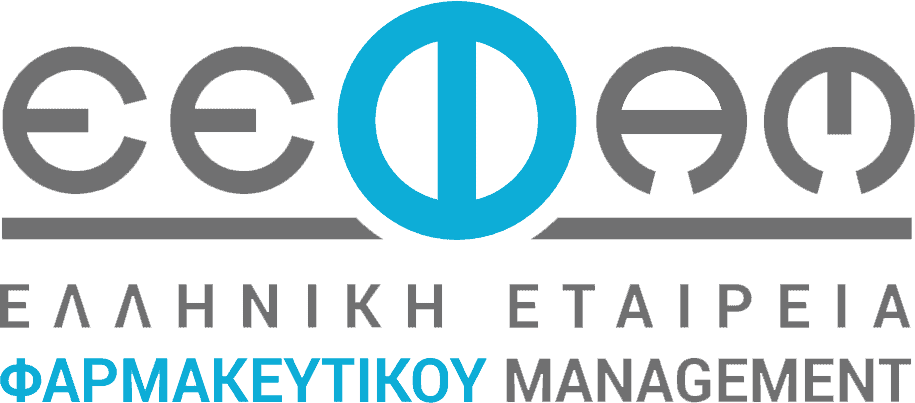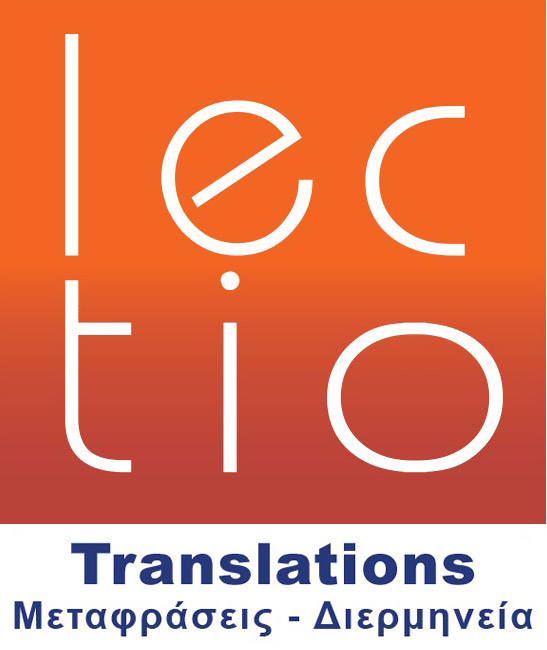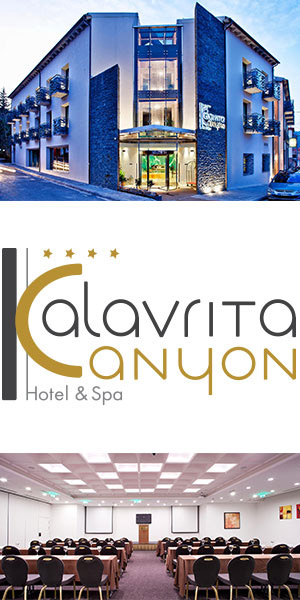Blog
Blog
The top 10 vaccine companies worldwide

What a difference five years—and a global pandemic—can make in reshaping an industry.
When Fierce Pharma last published our rankings of the top vaccine players back in 2017, we highlighted the five biggest companies with a global presence. Now, thanks in part to the biopharma industry’s response to the pandemic, we’re able to double the length of the list and include several new players.
This time around, the rankings are completely shuffled. Back in 2017, vaccine stalwarts like Merck, GSK and Sanofi led the list. Now, as industry watchers and others are aware, Pfizer is riding high atop the vaccines world.
Throughout Pfizer’s pandemic dominance, the company has been partnered with BioNTech on mRNA research and a global manufacturing expansion. Their success with COVID shot Comirnaty allowed the German mRNA specialist to catapult to the No. 2 spot.
Coming in third is Chinese vaccine player Sinovac, which reported more than $19 billion in sales last year.
Moderna, which didn’t market any products at the time of our last vaccine rankings, jumped over its larger Big Pharma rivals to rank in fourth place by revenues this year. The company’s Spikevax drove a massive revenue increase from 2020 to 2021, a time when Moderna has been busy scaling its global presence to support future growth.
Moving down the list, the three traditional Big Pharma players Merck, GSK and Sanofi landed in the fifth, sixth and seventh places, respectively. While none of them broke through with lucrative COVID immunizations, they have stable vaccine franchises that have been delivering big sales for years. Add that won’t change anytime soon, especially with pipeline shots making their way to the market.
Rounding out the rankings were three newcomers. China’s Zhifei reported $4.75 billion last year, while AstraZeneca and Johnson & Johnson also delivered blockbuster coronavirus vaccine sales in 2021.
There were also several honorable mentions for 2021. Seqirus, a leading flu vaccine player, posted around $2 billion in 2021 sales. The Serum Institute of India, a private company, appears to be generating around that level of sales. Another newcomer, Novavax, expects between $2 billion and $2.3 billion in 2022 revenues.
With at least 13 biopharma companies generating annual vaccine sales of at least $1 billion, it’s clear the vaccine industry is changing quickly. And with a slate of RSV products making their way through the R&D engines at many of these companies, more changes to the rankings could be due in the coming years.
Editor’s note: To compile these rankings, the Fierce Pharma team utilized company filings and converted foreign currencies to U.S. dollars based on average 2021 exchange rates.
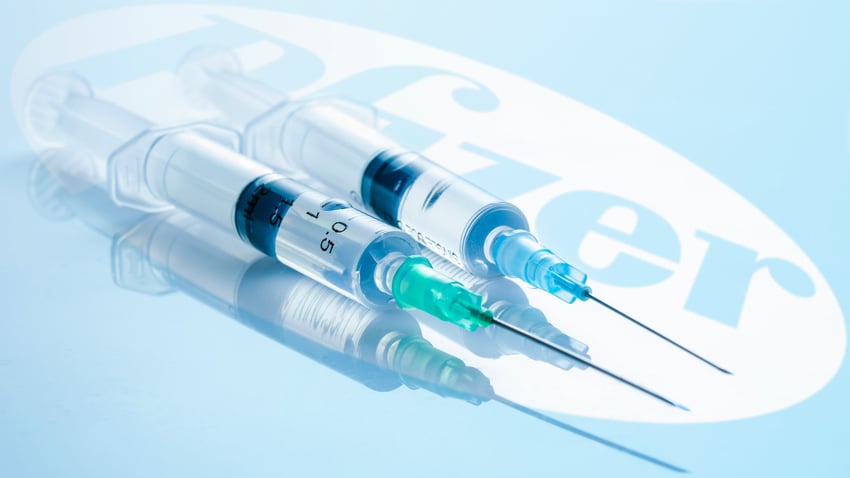
1 Pfizer
2021 vaccine revenues: $42.63 billion
First-half 2022 vaccine revenues: $25.40 billion
Vaccines leader: Nanette Cocero, Ph.D., head of vaccines
After a record-breaking year, it’s no surprise Pfizer climbed to the top of the top of the vaccines industry.
After an FDA emergency use authorization in December 2020, the company’s BioNTech-partnered COVID-19 shot catapulted to global prominence and scaled biopharma sales charts. In all, Pfizer reported nearly $37 billion in sales for the shot last year.
Those sales came in the form of supply orders from governments around the globe. Together with its partners, Pfizer produced 3 billion COVID-19 vaccine doses last year and said it expects 4 billion to be manufactured throughout 2022.
Before the pandemic, Pfizer’s vaccine business centered around Prevnar 13, previously the world’s bestselling vaccine until COVID-19 came into play. In 2019, the last year before COVID-19, the shot generated $5.85 billion and represented around 89% of Pfizer’s total vaccine haul.
These days, the Prevnar franchise is still very much in play, but its revenues, at $5.27 million in 2021, don’t hold a candle to Comirnaty. Neither do Pfizer’s other vaccines, such as meningitis B shot Trumenba, which generated $118 million worldwide last year.
Now, even as the pandemic has settled down and the COVID-19 vaccine market will soon shift to a commercial arena, Pfizer expects revenues to continue rolling in. The Biden administration said it won’t continue buying the shots and treatments starting next year, setting Pfizer up to be “even more competitive” thanks to its commercial skills which are “even better suited” to an open market, CEO Albert Bourla, Ph.D., said on a July investor call.
Despite the pandemic slowing down, Comirnaty is still on a roll. In July, the FDA approved the vaccine for use in preschoolers who are at least 6 months old. The company already had regulatory nods in children ages 6 to 17 and, until July, was the only COVID-19 vaccine available in that group. Then, in August, the FDA greenlighted the updated, omicron-targeted booster shots from both Pfizer and Moderna.
But while Pfizer and its COVID-19 vaccine rival Moderna played nice throughout the pandemic, that appears to be changing. In August, Moderna kicked off a patent fight by filing infringement lawsuits claiming Pfizer and BioNTech copied its mRNA vaccine knowledge.
As for Pfizer’s vaccine future outside of Comirnaty, the company has a few promising project in the pipeline. It recently posted positive phase 3 data for its respiratory syncytial virus vaccine, joining the race to carve out a space in the hot market. The company plans to file for approval this fall and hopes to get the vaccine approved by next year, rivaling the timelines for competitors from GSK and Johnson & Johnson. According to a note from SVB Leerink analyst Geoffrey Porges, Pfizer could collect $2.1 billion with its RSV vaccine by 2030.
In addition, Pfizer last year scored an FDA nod for next-gen pneumococcal vaccine Prevnar 20, which attacks 20 different strains of the bacterium. The company beat out Merck for the approval in adults, although Merck is further along in the development timeline for a pediatric vaccine.
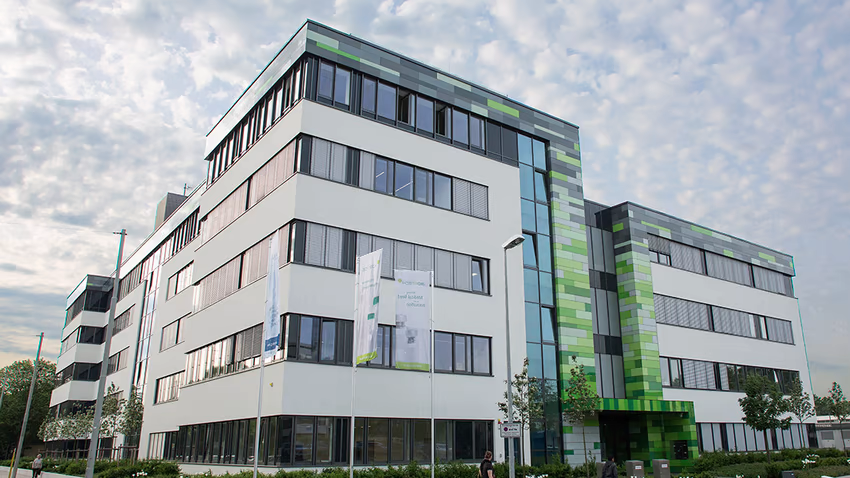
Looking ahead, BioNTech this year expects to generate revenues in the vicinity of 13 billion to 17 billion euros. (BioNTech)
2021 vaccine revenues: $22.48 billion
First-half 2022 vaccine revenues: $10.3 billion
Business leader: Uğur Şahin, CEO
In the years to come, industry watchers will likely be keeping their eyes peeled to see who pulls ahead in the messenger RNA vaccine race. After nearly simultaneously snagging authorizations for their mRNA shots for COVID-19, Moderna and Pfizer’s German partner BioNTech have established not only the technology but their companies at the forefront of what is almost certain to be a booming industry.
So far, BioNTech—which splits profits on the COVID jab, Comirnaty, with Pfizer—has fared slightly better than its cross-Atlantic rival on the revenue front. For all of 2021, Comirnaty, which is BioNTech’s sole commercial product, helped the company pull down sales of 19 billion euros.
Looking ahead, BioNTech this year expects to generate revenues in the vicinity of 13 billion to 17 billion euros.
Still, the sales salad days of the pandemic’s first few years won’t last forever, multiple analysts and health experts have warned.
Given that much of the world has “decided to live with the virus,” ODDO BHF analysts recently slashed their sales forecasts for BioNTech’s 2022 and 2023 COVID-19 vaccine sales by 28% and 33%, respectively. For 2022, the researchers expect the German mRNA wunderkind to pocket about 14 billion euros, which they noted is on the low end of BioNTech’s guidance.
While the ODDO team originally anticipated “bottom demand” from China of about 100 million doses a year to pad out Comirnaty’s sales haul, the company has since said those odds are null.
“We assumed that Comirnaty could be approved during the summer, but it looks as if China will follow its lockdown strategy rather than using an efficacious vaccine (in preventing severe disease),” the analysts explained in a note to clients last month.
Still, it’s not all bad news for BioNTech and Comirnaty, which the ODDO team expects “should remain a cash cow” even as COVID vaccinations eventually follow a similar commercial pattern to flu shots.
COVID aside, the ODDO team notes BioNTech’s oncology pipeline is “building up,” adding that the biotech’s clinical prospects beyond Comirnaty will become increasingly important from 2024 on.
Along the oncology front, BioNTech is working with partners like Regeneron Pharmaceuticals and Roche. For the Regeneron deal specifically, the drugmakers are angling to pair BioNTech’s experimental therapeutic cancer vaccine with Regeneron’s established treatment Libtayo.
Earlier this spring, the partners added a third cancer type to their collaboration, most recently for advanced non-small cell lung cancer (NSCLC).
That vaccine candidate—plus another being tested with Regeneron’s PD-1 in melanoma—are part of BioNTech’s FixVac program, which develops therapeutic vaccines with antigens specific to each type of cancer.
Along its entire pipeline, BioNTech boasts a range of early- and midstage assets across a range of cancer types such as melanoma, prostate cancer, head and neck cancer, NSCLC and more.
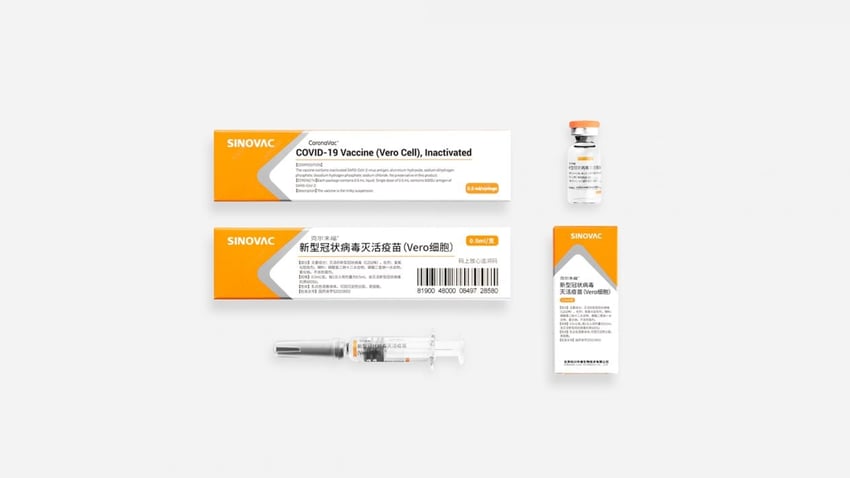
2021 vaccine revenues: $19.37 billion
First-half 2022 vaccine revenues: Not disclosed
Business leader: Weidong Yin, chairman and CEO
China’s Sinovac Biotech nearly quadrupled sales in 2021, edging out Moderna to rank among the world’s top three vaccine makers by revenue. The company’s COVID-19 vaccine, CoronaVac, was the main driving force behind the surge.
CoronaVac is designed with the traditional inactivated vaccine technology. Although CoronaVac has an approval under the World Health Organization’s emergency use listing, it’s widely viewed as less efficacious than mRNA-based vaccines from Moderna and Pfizer-BioNTech.
Still, the vaccine’s vast adoption in China and some low- and middle-income countries boosted Sinovac’s 2021 sales to $19.37 billion versus $511 million in 2020 or $246 million in 2019.
The vaccine gained a special Chinese go-ahead in August 2020 for inoculation in high-risk individuals such as healthcare professionals and in February 2021 expanded its use to the general public with a conditional marketing authorization.
As of late December 2021, the company provided more than 2.5 billion doses of CoronaVac globally, the company’s annual filing shows. In July 2021, Sinovac signed an advance purchase deal with Gavi, the Vaccine Alliance to provide up to 380 million doses of CoronaVac for distribution under the COVAX vaccine equity program through first-half 2022.
But investors in the Nasdaq-listed company haven’t been able to reap the full benefit from the huge revenue gain thanks to a trading halt since February 2019.
Nasdaq suspended Sinovac’s trading in 2019 amid an attempted coup by a group of activist investors led by investment firm 1Globe Capital. The shareholder activism came against the backdrop of a nasty power grab during a soon-aborted, messy take-private process.
The U.S. Securities and Exchange Commission (SEC) later charged 1Globe for failing to disclose its increasing stake in Sinovac while working with others to replace nearly the entire Sinovac board. In 2020, 1Globe and its owner settled the case with a combined $290,000 in civil penalties and later called on all shareholders to put aside their differences and work together to support CoronaVac.
Sinovac’s future on Nasdaq was thrown into doubt once again after it, along with several other companies with Chinese background, was put on an SEC delisting watchlist under the Holding Foreign Companies Accountable Act. The SEC and the Chinese government recently reached a deal to resolve their regulatory disagreement, but the exact outcome of each company’s listing remains to be seen.
Meanwhile, Sinovac recently got approvals to start clinical trials of its omicron booster in China and Chile. It’s also working on a trivalent vaccine targeting the original coronavirus strain along with the delta and omicron variants.
But as the majority of the Chinese population has been immunized and with more companies entering the COVID vaccine field, Sinovac likely won’t be able to maintain the same revenue level in 2022. Besides, Beijing has recently been cutting (Chinese) the price of inactivated COVID shots to below 20 Chinese yuan ($2.80) per dose, the Chinese government said in April.
Outside of COVID, Sinovac also has vaccines against seasonal and pandemic flu, polio, hepatitis A and B and pneumococcal disease, among others. Its pipeline includes a recombinant HBV shot, an HAV and HBV combined vaccine, an absorbed tetanus vaccine, a Hib conjugate vaccine and others.
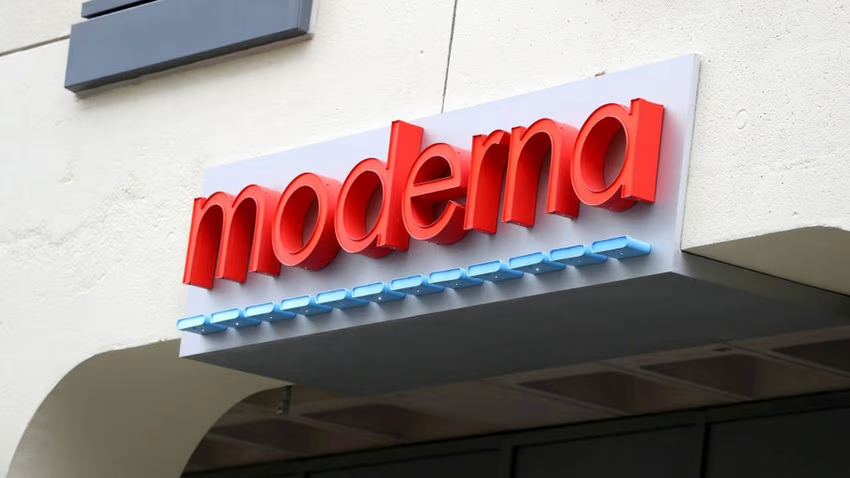
2021 vaccine revenues: $17.67 billion
First-half 2022 vaccine revenues: $10.82 billion
Business leader: Stéphane Bancel, CEO
Moderna didn’t come from out of the blue with the world’s second most prolific COVID-19 vaccine. Long before the Massachusetts-based company scored its FDA authorization for Spikevax at the end of 2020, it was a hot biotech, setting records for the funding it attracted.
In 2013, AstraZeneca partnered with Moderna for $240 million—the most ever for a biotech that had never tested its drugs on humans. Then in 2015 and 2016, private investment rounds fetched $450 million and $475 million, respectively.
After promising that its mRNA technology could produce cures for targets such as cancer, Moderna scaled back in 2014, shifting its focus to what seemed a less ambitious enterprise: vaccines.
While the move disappointed some investors, it turned out to be just the ticket Moderna needed for market success. When the pandemic hit in 2020, one of the companies the U.S. turned to was Moderna.
More than two years later, the government has paid nearly $10 billion to Moderna for research and development, manufacturing scale-up and advance purchases of the shot.
Moderna cashed in on its promise in 2021, racking up vaccine sales of $17.67 billion, which accounted for most of the company’s $18.47 billion in total revenues. This year, Spikevax exceeded that pace in the first half, generating $10.5 billion in sales. And the company projects it will match that figure in the second half of 2022 based on advance orders.
Earlier this year, with supply for the vaccine outpacing demand, Moderna agreed to delay shipments to Europe until later in 2022 and into 2023.
While Moderna was able to convert Spikevax’s original emergency use authorization to a full approval in January, it also scored emergency authorization in August for its adapted vaccine against the omicron variant’s BA.4 and BA.5 lineages.
On the same day, Pfizer won a nod for its subvariant-targeting booster. While Moderna’s green light was for adults 18 and older, Pfizer’s covered those 12 and older.
Aside from adapted Spikevax formulations, Moderna is also working on a flu vaccine. CEO Stéphane Bancel has said he believes the shot can deliver 90% efficacy, which would be a vast improvement on the current offerings.
In June, Moderna dosed its first patients in the phase 3 flu trial. Pfizer is close behind in the development of its mRNA flu shot.
Also in phase 3are vaccines for cytomegalovirus and respiratory syncytial virus for the elderly. In earlier stages, Moderna is studying a combined flu and COVID vaccine and a combined flu, COVID and RSV shot.
Also in the works are vaccines against HIV as well as Epsteinn-Barr, herpes simplex, varicella zoster, zika and Nipah viruses.
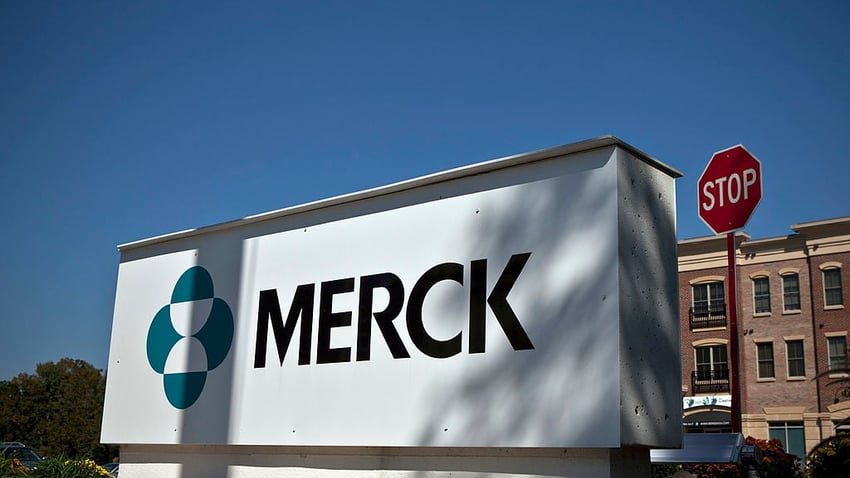
2021 vaccine revenues: $9.69 billion
First-half 2022 vaccine revenues: $4.97 billion
Business leader: Robert Davis, CEO
The pandemic brought a change of the guard, with COVID-19 vaccine producers replacing long-standing vaccine stalwarts like GSK, Sanofi and Merck.
While much was expected of Merck when the pandemic broke, the company entered the competition late and never came close to developing a COVID vaccine, bailing on two programs shortly after Pfizer and Moderna gained FDA authorizations for their respective shots.
Instead of continuing its reign as the world’s top vaccine seller, Merck took fifth place based on 2021 revenues, with a haul of $9.69 billion. If, however, COVID vaccine sales were excluded from this top 10 ranking, Merck would’ve sat atop this vaccine revenue report. And, with $4.97 billion in the first half of 2022, Merck is on its way to topping its 2021 figure.
Merck’s Gardasil continued its dominance of the HPV arena with $5.7 billion in sales last year, a major rebound from its performance in pandemic-addled 2020, when sales came in at $3.9 billion. Gardasil has continued to thrive in the first half of 2022 with sales of $3.1 billion.
Gardasil’s first-half boost also was fueled by a $1 billion investment in manufacturing after demand outpaced supply in 2018 and 2019. Now, the company believes Gardasil could double its sales by 2030 as more manufacturing resources are scheduled to come online.
Merck’s other blockbuster vaccine franchise, which includes ProQuad for the prevention of measles, mumps, rubella and varicella as well as Varivax, which defends solely against chickenpox, raked in a combined $2.1 billion last year. It was a modest rebound from the pandemic slowdown, when sales came in at $1.9 billion.
RotaTeq, a vaccine to prevent rotavirus in young children, continued its steady climb, reaching $807 million in 2021. The shot has generated revenue increases each year since 2015. Merck also sold $179 million of hepatitis A vaccine Vaqta last year, up from $170 million in 2020.
The one Merck vaccine that saw a sales drop in 2021 was Pneumovax. After reaching $1.1 billion in 2020, sales fell to $893 million and then again in the first half of this year to $325 million.
Expect the trend to continue as Merck phases in its next-generation pneumococcal shot Vaxneuvance, which appears set to challenge market dominator Pfizer. Its Prevnar 13 raked in $5.3 billion last year.
Merck scored a key pediatric approval in June for Vaxneuvance, and the vaccine has an advantage over Pfizer’s shot. The vaccine protects against 15 serotypes, as opposed to 13 for Prevnar, and is likely to be favored until Pfizer can gain an FDA blessing for its next-gen jab, Prevnar 20.
In August, Pfizer presented positive trial data for Prevnar 20, setting it up for an FDA green light. The company plans to submit it for approval by the end of this year.
Merck recently reported positive results for another pneumococcal vaccine, V116, a 21-valent shot designed to protect people 65 and older.
Another pipeline vaccine candidate, V184, has shown promise in phase 2 to defend against chikungunya fever, a mosquito-borne disease.
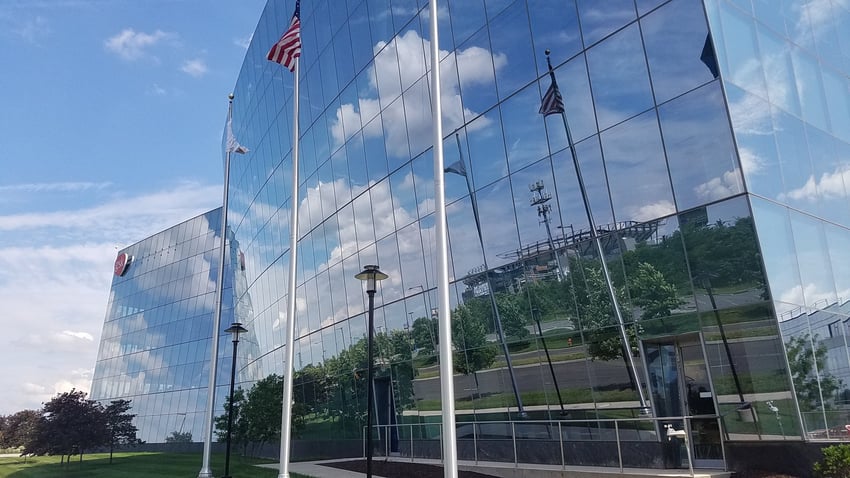
2021 vaccine revenues: $9.32 billion
First-half 2022 vaccine revenues: $4.22 billion
Vaccines leader: Roger Connor, head of vaccines
At one time the world’s largest vaccine player by revenue, GSK may have been poised to hang on to that ranking if its COVID-19 partnership with Sanofi panned out. Instead, the companies ran into R&D setbacks and have been unable to launch their COVID shot.
Still, that’s not to say GSK doesn’t have a successful vaccines group. In all of last year, GSK’s “crown jewel” franchise , as it is sometimes called, delivered 6.8 billion pounds sterling in revenues. That was around $9.3 billion when converted to dollars using 2021’s average pound-to-dollar exchange rate of 1.37.
And, even though GSK’s COVID-19 partnership with Sanofi hasn’t come through, the company’s collaboration with Medicago did yield a win. Early this year, Medicago’s plant-based COVID-19 vaccine, Covifenz, scored a regulatory nod in Canada. The shot incorporates GSK’s adjuvant, and the partners were said to be eyeing more regulatory submissions elsewhere.
All told, GSK’s 2021 vaccine sales performance was enough to rank the company sixth on the global rankings, behind four COVID-19 vaccine players and Merck, whose traditional vaccines franchise overpowered several other companies that were featured in our 2017 report.
GSK’s vaccines business comprises a blockbuster meningitis franchise, which pulled in 961 million pounds last year ($1.31 billion). The company’s flu business generated 679 million pounds last year, while its “established vaccines” group raked in a whopping 2.97 billion pounds. In its “established” category, GSK sells vaccines against hepatitis plus infant vaccines and boosters.
Perhaps the most important product for the company right now is Shingrix. After an approval in 2017, the shingles vaccine was gaining significant steam right before the pandemic struck. That crisis knocked the launch off-course, and, now, GSK is doubling down on its efforts to “relaunch” the shot. The company is aiming for around 4 billion pounds in 2026 sales, while the vaccine generated 1.72 billion pounds in 2021.
Elsewhere, GSK also collected 447 million pounds in COVID vaccine revenues from selling its adjuvant to the U.S. and Canadian governments, according to its annual report. The company also sells vaccines against rotavirus and pneumococcal disease, which generated 541 million pounds and 357 million pounds, respectively.
Like several other companies on this report, GSK has also undergone a transition in vaccine leadership since our last ranking published. Luc Debruyne previously led the unit, but he left at the end of 2017. Since early 2018, Roger Connor has led GSK’s vaccines group. Nowadays, Debruyne is an adviser to the Coalition Epidemic Preparedness Innovations and an advisory board member for Greenlight Biosciences, among other roles.
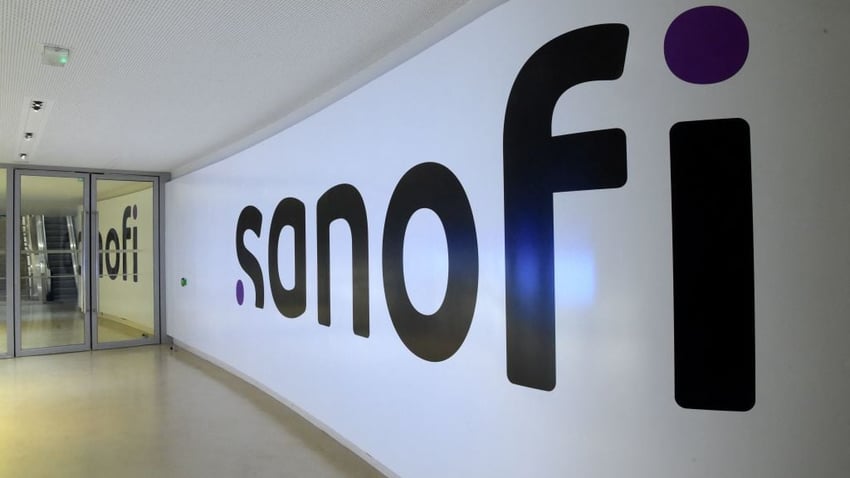
2021 vaccine revenues: $7.45 billion
First-half 2022 vaccine revenues: $2.32 billion
Vaccines leader: Thomas Triomphe, head of vaccines
Like its European pharma peer GSK, Sanofi has long boasted one of the leading vaccine franchises globally. But when the pandemic struck in 2020, the companies couldn’t deliver on their joint mission to quickly provide an effective vaccine.
Even without a pandemic shot, though, Sanofi’s immunization business has continued to be a major revenue contributor for the global drugmaker. If Sanofi and GSK had succeeded in their COVID-19 shot quest, they may have been at or near the top of this year’s revenue ranking.
In flu, Sanofi remains the world’s leading vaccine player; the company recently said it again expects a “record” year in 2022.
Last year, Sanofi’s flu franchise brought in 2.63 billion euros, a 6% increase from 2020. That revenue haul translated to around $3.1 billion based on last year’s average euro-to-dollar exchange rate of 1.18.
Elsewhere, Sanofi’s group of infant vaccines against polio, pertussis and haemophilus influenzae type B has kept growing lately. The franchise pulled down 2.16 billion euros in 2021, a 4% increase from 2020.
Sanofi also markets meningitis shots, which generated 658 million euros last year, plus booster and travel vaccines, which pulled down 488 million euros and 306 million euros, respectively. All of the company’s vaccine franchises delivered sales growth in 2021, driving a groupwide revenue performance of 6.32 billion euros ($7.45 billion).
But it was the company’s partnership with GSK that drew so many headlines in 2020 and 2021. In April 2020, the companies inked an unusual partnership between rival drugmakers, pairing GSK’s pandemic booster technology with Sanofi’s recombinant DNA vaccine platform.
As industry watchers are aware, the work ran into R&D setbacks and has not yet reached the market. Instead, mRNA offerings from Pfizer-BioNTech and Moderna have dominated COVID-19 market share in developed countries, leading to their positions in this report.
Meanwhile, Sanofi also saw some executive turnover in its vaccines business during the pandemic. Back in May 2020, the company’s then-vaccines chief David Loew departed to become CEO of French biopharma company Ipsen. At the time, Sanofi appointed Thomas Triomphe as its vaccines head. Triomphe joined Sanofi’s vaccine group in 2004 and had served as head of franchises and product strategy before his promotion.
Sanofi also rebranded its vaccine business this year. In February, the company revealed a new corporate brand and logo and did away with its prior branding for the chronic diseases group “Sanofi Genzyme” and its vaccines unit “Sanofi Pasteur.” Now, the two businesses fall under the larger “Sanofi” branding.
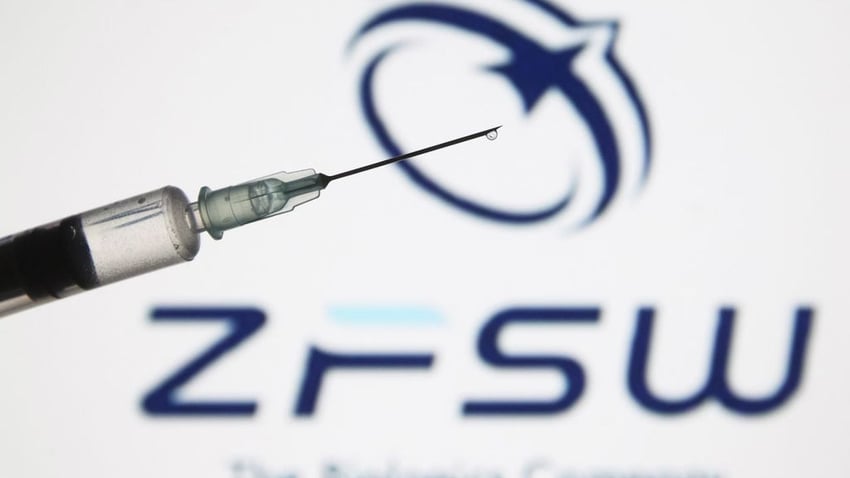
2021 vaccine revenues: $4.75 billion
First-half 2022 vaccine revenues: $2.56 billion
Business leader: Rensheng Jiang, chairman and president
Chongqing Zhifei Biological Products is perhaps best known as the Chinese partner of Merck & Co.’s blockbuster HPV vaccines Gardasil and Gardasil 9. Since the two shots’ Chinese nods in 2017 and 2018, demand has consistently depleted supply, with regular reports of long waiting lists and difficulty across the country in obtaining a vaccine.
The HPV vaccines have become the cornerstone of Zhifei’s business. Before the Gardasil agreement with Merck in 2018, Zhifei’s revenue was hovering at around 700 million Chinese yuan. In 2020, the firm counted 15.2 billion yuan in its total haul.
In 2021, Chinese authorities released 8.8 million doses of Gardasil, up 22% year over year. And Gardasil 9’s release number doubled to 10.2 million doses, according to Zhifei’s annual report (Chinese).
The upward trend has continued into 2022. According to Zhifei’s half-year report, Gardasil release jumped 60% to nearly 4.9 million doses, and Gardasil 9 nearly quadrupled to about 9.3 million doses in the first six months of 2022.
The Gardasil franchise is on track to another revenue boost after Chinese authorities in August expanded Gardasil 9’s eligible population to women 9 to 45 years of age. Previously, only women ages 16 to 26 were eligible for the nine-valent shot.
Besides the HPV shots, Zhifei is also Merck’s partner on the New Jersey pharma’s rotavirus vaccine RotaTeq, its pneumococcal polysaccharide vaccine Pneumovax 23 and its hepatitis A vaccine Vaqta, all of which saw increased product release in 2021 versus 2020.
All told, the Merck-partnered shots increased sales by 50% to 20.9 billion Chinese yuan for Zhifei in 2021. In the first half of 2022, those shots hauled in 16.7 billion yuan in a 134% year-over-year jump.
Bivalent HPV shots by GSK and a couple domestic drugmakers are already available in China, but they are no threat to the Gardasil franchise. And rival nine-valent vaccines likely won’t reach the market until after 2025.
Zhifei also has a self-developed portfolio. That department’s revenue septupled to 9.7 billion yuan in 2021 partly thanks to the company’s recombinant COVID-19 vaccine.
Zhifei’s COVID shot, ZF2001, was approved for use in China in March 2021. Earlier this year, its authorization was expanded as a booster shot.
But as China’s COVID vaccination rate reached about 90% according to Chinese authorities in July, the market for COVID shots is dwindling, despite booster nods.
During the first six months, Zhifei’s self-developed vaccines suffered a 72% revenue decline to about 1.7 billion yuan. Excluding the COVID shot, the portfolio enjoyed a 26% revenue increase to 920 million yuan, Zhifei said.
The company is also working on a delta-omicron bivalent shot, ZF2202, based on its recombinant Chinese hamster ovary cell-based technology. Early studies showed that the updated shot can elicit stronger antibody levels against the dominant omicron variant, the company said in its half-year report.
Besides COVID, Zhifei’s marketed products include an ACYW-135 vaccine, an Hib shot and different meningococcal AC vaccines. The company boasts a wide pipeline with candidates for rabies, influenza, pneumococcus, dysentery, ACYW-135, enterovirus 71, tuberculosis, norovirus and others.
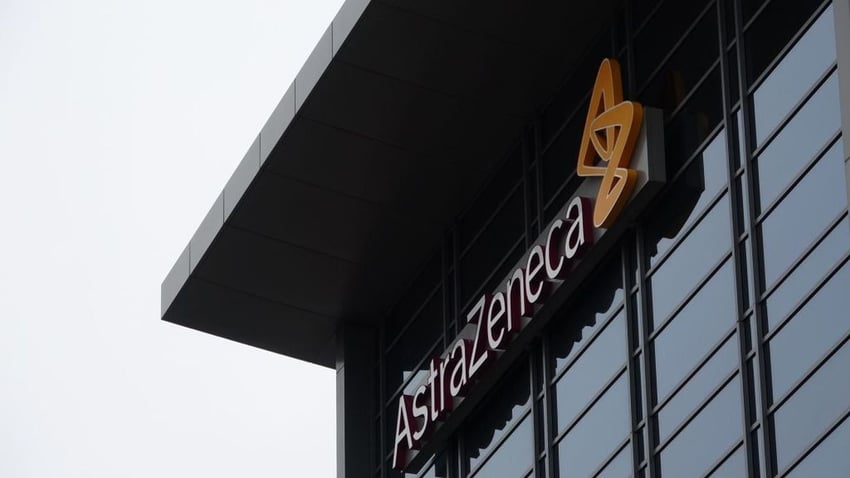
2021 vaccine revenues: $3.98 billion
First-half 2022 vaccine revenues: $1.6 billion
Business leader: Pascal Soriot, CEO
While AstraZeneca managed to clinch blockbuster sales of its COVID-19 shot Vaxzevria, the British pharma’s time in the vaccine spotlight may be coming to an end.
Now on the hunt for small and midsized acquisitions in its established therapeutic areas like cardiovascular disease and cancer, AstraZeneca is considering severing its vaccine business altogether, the company’s CEO Pascal Soriot told Reuters earlier this summer.
While AstraZeneca’s COVID-19 vaccine was among the first to woo global regulators, Vaxzevria—which is based on more traditional vaccine technology—walked in the shadow of mRNA giants from Moderna and Pfizer-BioNTech. What’s more, AZ’s Vaxzevria struggled on production and had delivery delays in Europe as well as safety concerns over rare blood clots.
Early on in the vaccine’s launch, a supply shortfall triggered a back-and-forth between AZ executives and European officials. Shortly after that, concerns mounted about the vaccine’s efficacy in older adults. And complicating matters even further, a parade of European countries started suspending use of the shot over blood clot fears last spring.
Stateside, AstraZeneca’s shot never passed muster with regulators, and much of the company’s vaccine saga in the U.S. revolved around a major manufacturing blunder with contractor Emergent BioSolutions. After a cross-contamination snafu scuttled a seemingly ever-expanding number of AZ doses, the company was forced to seek out a new production partner.
In turn, the doses AZ pledged to the U.S. have instead formed part of the country’s vaccine donations, which include certain doses cleared from Emergent’s Baltimore factory.
Still, Vaxzevria has continued to play a big role outside the U.S. and certain parts of Europe, where the vaccine is being used in some 185 countries, according to a New York Times tracker. As of last November, AstraZeneca said in a press release it had released supply for 2 billion doses of its COVID shot “to more than 170 countries across every continent.”
Since then, the company has released a total of 3 billion doses across more than 180 countries, an AstraZeneca spokesperson told Fierce Pharma over email. She added that two-thirds of AstraZeneca’s Vaxzevria shipments have gone to low- and lower-middle-income nations.
Still, with its bumpy COVID rollout still fresh of mind for AZ, the company has elected to nowprioritize its roster of protective antibodies—both for COVID-19 and other viruses like respiratory syncytial virus—Soriot said in the recent Reuters interview.
News of a total vaccine separation shouldn’t come as a total shock. Last November, AstraZeneca revealed it was splitting off a separate unit to manage its COVID-19 products including its vaccine in a bid to better handle its pandemic response.
“In order to optimize the management of our existing portfolio of vaccines and antibodies for viral respiratory infections, we are creating a dedicated vaccines and immune therapies unit,” the company said in a statement. “The team will be dedicated to our COVID-19 vaccine, our long-acting antibody combination and our developmental vaccine addressing multiple variants of concern, as well as our existing portfolio for respiratory viral disease.”
Aside from COVID-19, AstraZeneca has an intranasal flu vaccine in Fluenz Tetra/FluMist Quadrivalent.
Looking to the company’s pipeline, AstraZeneca has no other vaccines besides Vaxzevria in the hopper.
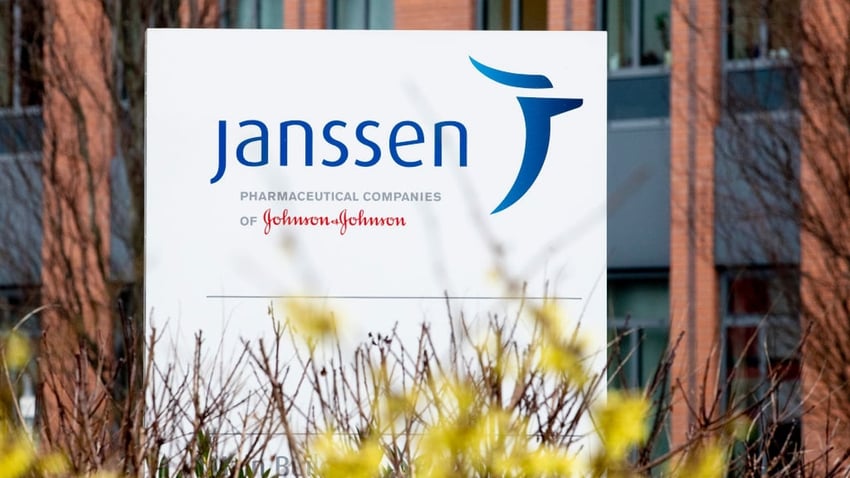
2021 vaccine revenues: $2.39 billion
First-half 2022 vaccine revenues: $1 billion
Vaccines leader: Penny Heaton, global head of vaccines at Janssen
Despite Johnson & Johnson being the top dog in Fierce Pharma’s annual Big Pharma ranking, the company’s vaccine portfolio doesn’t quite stack up to some of its peers. The pharma giant’s main vaccine, its COVID-19 immunization, has been riddled with problems throughout its run.
The shot garnered the company $2.39 billion in 2021 sales, a respectable sum, but one that hardly moved the needle for a company that pulled down $93.77 billion across all its businesses last year.
J&J scored FDA authorization for its one-dose COVID-19 vaccine in late February of 2021, joining mRNA shots from Pfizer and Moderna on the market. In its phase 3 trial, the shot posted 66% efficacy in moderate to severe disease and 85% in severe disease. Rivals Moderna and Pfizer delivered higher efficacy, but J&J was able to provide the protection in one shot instead of two. At the time, many believed J&J’s dosing advantage would drive vaccination uptake.
But shortly into the rollout, U.S. authorities halted vaccinations over concerns of rare blood clots. J&J’s shot never really recovered from there, and problems at manufacturing partner Emergent BioSolutions certainly didn’t help.
By April of 2022, a little over a year after the vaccine first got approved, the company said it would no longer include its COVID-19 vaccine in its revenue forecasts. The decision followed a disappointing sales quarter, when the shot garnered just $457 million in revenue. Back in January, J&J had predicted 2022 sales of between $3 billion and $3.5 billion. The company’s chief financial officer, Joseph Wolk, chalked it up to lower demand for all COVID-19 shots due to “global supply surplus and vaccine hesitancy in developing markets.”
Then, in full circle fashion, the FDA in May restricted use of the vaccine to those 18 and older who cannot access other vaccines.
But that won’t spell the end of the company’s vaccine ambitions. In 2018, J&J opened a plant in the Netherlands intended to produce clinical trial doses of candidates against HIV, respiratory syncytial virus, Ebola, Zika and flu. J&J spent four years and 72 million euros building the plant.
Meanwhile, the RSV race is ramping up, and companies are scrambling to carve out a space in the blockbuster market. J&J is expected to nab $1.7 billion with its vaccine candidate by 2030, SVB Leerink analyst Geoffrey Porges said in a note to clients last September.
Elsewhere, the company has an approved Ebola vaccine that authorities deployed in Guinea in 2021. The World Health Organization recommended J&J’s Ebola vaccine during an outbreak after the shot gained approval in Europe in July 2020.
J&J also has a late-stage HIV vaccine, though that program suffered a setback last year.
